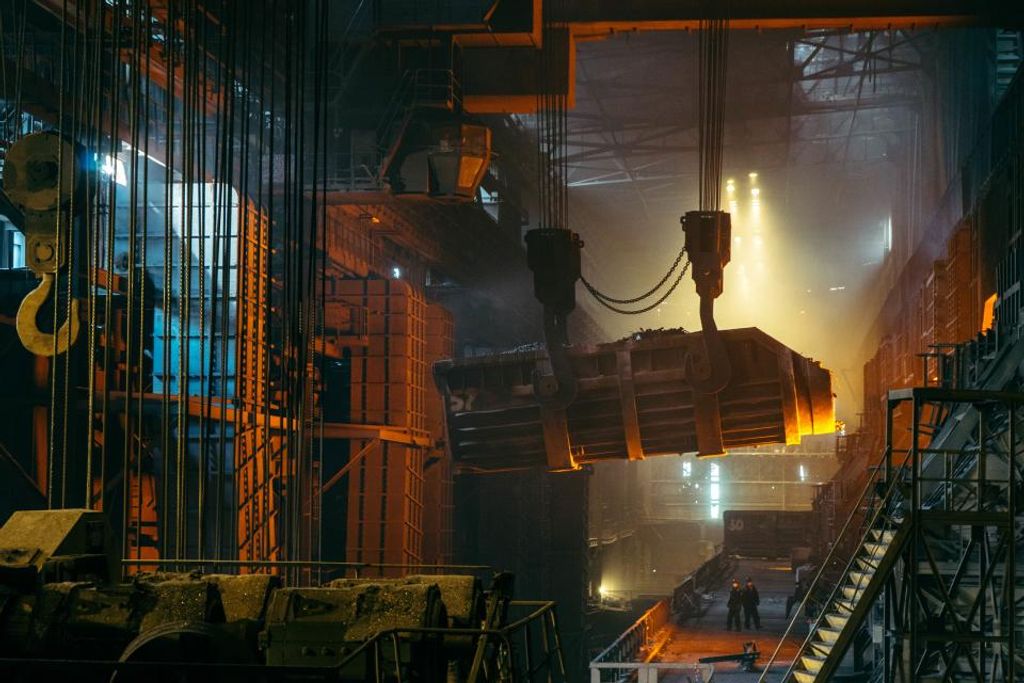The steel industry is currently facing a severe crisis, with numerous challenges and financial difficulties. In this article, we will explore the impact of the crisis on the steel industry, including the factors contributing to the crisis, the challenges faced by steel companies, and the government initiatives to support the industry. We will also discuss debt recovery strategies for steel companies, including assessing the debt situation, negotiating with creditors, and implementing cost-cutting measures.
Key Takeaways
- The steel industry is facing a crisis due to various factors such as overcapacity and declining demand.
- Steel companies are facing challenges such as high debt levels, low profitability, and intense competition.
- Government initiatives play a crucial role in supporting the steel industry and promoting its recovery.
- Assessing the debt situation is essential for steel companies to develop effective debt recovery strategies.
- Negotiating with creditors can help steel companies restructure their debt and improve their financial position.
The Impact of the Crisis on the Steel Industry
Factors Contributing to the Crisis
The crisis in the steel industry has been fueled by several key factors:
-
Overcapacity: Excessive production capacity has led to a surplus of steel in the market, driving down prices and reducing profitability.
-
Global Economic Slowdown: Sluggish economic growth in major steel-consuming countries has dampened demand for steel products, further exacerbating the industry’s challenges.
-
Trade Disputes and Tariffs: Trade tensions and the imposition of tariffs on steel imports have disrupted global supply chains and created uncertainty for steel companies.
-
Rising Production Costs: Increasing costs of raw materials, energy, and labor have squeezed profit margins, making it difficult for steel companies to remain competitive.
These factors have created a perfect storm for the steel industry, leading to financial distress and the need for debt recovery strategies.
Challenges Faced by Steel Companies
Steel companies in the midst of the crisis are grappling with a range of challenges. Declining demand for steel products has put immense pressure on their revenue streams. Global oversupply has led to a sharp decline in steel prices, further impacting their profitability.
Additionally, steel companies are burdened with high levels of debt. The combination of reduced revenue and mounting debt has created a precarious financial situation. Limited access to credit has made it difficult for these companies to invest in modernization and innovation.
To add to their woes, steel companies are also facing intense competition from both domestic and international players. This has resulted in a shrinking market share and reduced pricing power.
In order to navigate these challenges, steel companies need to adopt a strategic approach. They must focus on diversifying their product portfolio to cater to changing market demands. Improving operational efficiency and streamlining supply chains can help reduce costs and improve profitability.
It is crucial for steel companies to strengthen relationships with creditors and negotiate favorable terms. Implementing cost-cutting measures such as reducing overhead expenses and optimizing production processes can also contribute to debt recovery and financial stability.
Government Initiatives to Support the Industry
The government has implemented several initiatives to support the steel industry during this crisis. These initiatives aim to stimulate growth, protect jobs, and ensure the industry’s long-term sustainability.
One of the key initiatives is the provision of financial assistance to steel companies. The government has allocated a significant amount of funds to help companies manage their debt and meet their financial obligations. This financial support is crucial in helping steel companies navigate through the crisis and avoid bankruptcy.
Additionally, the government has introduced tax incentives for steel companies. These incentives aim to reduce the financial burden on companies and encourage investment in the industry. By providing tax relief and incentives, the government hopes to promote growth and attract new investors to the steel sector.
Furthermore, the government has established collaborative partnerships with industry stakeholders. These partnerships involve regular dialogues and information sharing to address the challenges faced by the steel industry. By working together, the government and industry stakeholders can develop effective strategies and overcome obstacles to recovery.
In summary, the government’s initiatives to support the steel industry include financial assistance, tax incentives, and collaborative partnerships. These measures are crucial in revitalizing the industry, protecting jobs, and ensuring its long-term viability.
Debt Recovery Strategies for Steel Companies
Assessing the Debt Situation
When assessing the debt situation of a steel company, it is crucial to gather accurate and up-to-date financial information. This includes analyzing the company’s balance sheet, income statement, and cash flow statement. It is also important to consider the level of debt in relation to the company’s assets and revenue.
To gain a comprehensive understanding of the debt situation, steel companies can use a debt-to-equity ratio. This ratio compares the total debt of the company to its shareholders’ equity, providing insights into the financial leverage and risk. Additionally, conducting a credit analysis can help identify any red flags or potential risks associated with the company’s debt.
To summarize, assessing the debt situation involves gathering accurate financial information, analyzing key financial statements, considering the debt-to-equity ratio, and conducting a credit analysis.
Negotiating with Creditors
When negotiating with creditors, it is important to maintain open lines of communication and establish trust. Be transparent about the company’s financial situation and provide evidence of efforts to improve cash flow. Consider offering alternative payment plans or debt restructuring options to demonstrate a commitment to resolving the debt.
Additionally, prioritize negotiations with key creditors who have a significant impact on the company’s operations. Focus on finding mutually beneficial solutions that address both parties’ interests.
Remember to document all agreements in writing to avoid any misunderstandings or disputes in the future.
If necessary, seek professional advice from experienced debt recovery specialists who can provide guidance on negotiation strategies and help navigate complex creditor relationships.
Implementing Cost-cutting Measures
Implementing cost-cutting measures is crucial for steel companies to improve their financial situation. Reducing operational expenses is one of the key strategies that can be adopted. This can include optimizing production processes, streamlining supply chains, and implementing energy-saving measures.
Another important aspect is managing workforce costs. Companies can consider reducing labor costs through measures such as restructuring employee benefits and implementing efficiency programs.
Additionally, evaluating and renegotiating contracts with suppliers and service providers can help in achieving cost savings. This involves identifying opportunities for better pricing and negotiating favorable terms.
It is also essential for steel companies to monitor and control inventory levels. Implementing inventory management systems can help in optimizing stock levels and reducing carrying costs.
By implementing these cost-cutting measures, steel companies can work towards improving their financial stability and recovering from the crisis.
Debt recovery is a crucial aspect for steel companies to maintain financial stability and ensure business growth. Implementing effective debt recovery strategies can help steel companies recover outstanding payments and minimize the risk of bad debts. One of the key strategies is to establish clear credit terms and policies to avoid late payments and defaults. Steel companies can also consider partnering with top B2B collection agencies that specialize in debt recovery for the steel industry. These agencies have the expertise and resources to handle complex debt collection cases and negotiate with debtors on behalf of the steel companies. By leveraging their services, steel companies can improve their cash flow, reduce the burden of debt collection, and focus on their core business operations. If you are a steel company looking for expert debt collection services, Request a Quote from our top B2B collection agencies today and take the first step towards recovering your outstanding debts.
Frequently Asked Questions
What are the main factors contributing to the crisis in the steel industry?
The main factors contributing to the crisis in the steel industry include overcapacity, declining demand, rising production costs, and increased competition from other countries.
What are the challenges faced by steel companies during the crisis?
Steel companies face challenges such as high debt levels, reduced profitability, layoffs, and the need to adapt to changing market conditions.
What government initiatives have been implemented to support the steel industry?
Governments have implemented initiatives such as providing financial assistance, imposing tariffs on steel imports, and promoting infrastructure projects to support the steel industry.
How can steel companies assess their debt situation?
Steel companies can assess their debt situation by analyzing their financial statements, evaluating their cash flow, and determining their debt-to-equity ratio.
What strategies can steel companies use to negotiate with creditors?
Steel companies can negotiate with creditors by proposing debt restructuring plans, offering repayment schedules, and seeking debt forgiveness or reduction.
What cost-cutting measures can steel companies implement to recover from debt?
Steel companies can implement cost-cutting measures such as reducing production capacity, optimizing operational efficiency, and renegotiating contracts with suppliers.





